 November 2021
"Our relationship with land cannot heal until we hear its stories."
Robin Wall Kimmerer, quote from Braiding Sweetgrass
November is National Native American Heritage month. To celebrate, we give center stage to Indigenous people to share their stories in their own voices. With these stories, we are planting seeds so that you learn more about the land you play in, this month and the rest of the year.

Mii a’aw anishinaabe aabajitood i’iw gaa-pi-miini’igoowizid ji-mino-bimaadizid.
 Before taking on his current role as Tribal Liaison with the Minnesota DNR Commissioner's Office, Harrington was Commissioner of Natural Resources for the Mille Lacs Band of Ojibwe.
As Anishinaabe (Ojibwe), the outdoors is our natural habitat. It's our way of life. Nature is what makes up our being, and the Anishinaabe are a part of nature. You can’t have one without the other. Healing takes place in nature. In order to achieve a level of sacrifice, we fast in nature to seek higher learning, a vision if you will. Nature is the manidoog (spirits) gift to the Anishinaabe to sustain, enhance and preserve life.

I really enjoy spearing fish with my kids. Accepting the life being given is a great honor to the one taking the fish and to the fish themselves. Seeing my boys fulfilling a provider role for our people is very empowering.
Utilizing our public lands is an act of gratitude to our ancestors, who ensured we have access to land to accept the gifts of the manidoog. They knew that in order to maintain our way of life as the United States encapsulated us, they had to be certain that the U.S. agreed that we retain our right to occupy space. We come from the land and eventually will return to the land when our time comes to change worlds.
As Anishinaabe, walking a trail or spending time next to water, being present with trees, water and rocks boosts our spiritual energy, our life force. The trees are manidoog that agreed to take away our sadness and give us life in return. There is a manidoo in every body of water that was placed there to protect the Anishinaabe. Spending time with these beings nourishes our spirits, and the manidoog also appreciate our presence just as much.
|
Citizen of the Fond du Lac Band of Lake Superior Chippewa goes the distance and sets records with her single-speed bike — all of it with a big smile.
Since we featured Alexandera Houchin last year, she's been busy spreading her love of biking to others. She was selected for a fellowship and is working within her tribal community to build a bicycle collective. Houchin is still winning bike races. Recent achievements include being the first woman to cross the finish line at the 2021 Colorado Trail Race and setting the women’s single-speed record on the Arizona Trail 300.
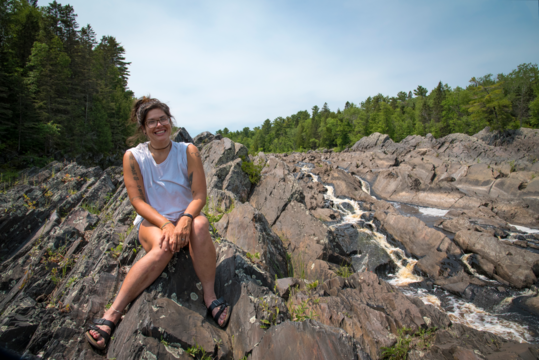 Houchin has a favorite spot at Jay Cooke State Park, where she can see the St. Louis River and feel the spirit of her ancestors. PHOTOS: Deb Rose
I love spending time in my public lands because I want to know the place I call home. I want to know the land in the dark, and in the light. I want to know what it’s like when I traverse it slow, or fast. I want to know what trails cross rivers and streams in the winter that I can’t traverse in the summer. There are trails to places you can’t reach in a car!

As an Indigenous person, I view the topic of public lands through a nuanced lens. I struggle, sometimes, understanding that much of the public land we have nowadays came from further dislocation of native peoples — however, I feel extremely fortunate to be a visitor on these lands. I’m grateful we still have places where we can all play.
Public lands are for all of us to enjoy and explore and put our bodies in motion. If we go outdoors with friends or family, we can explore together and form deeper personal connections. I believe that all of us who utilize public lands are connected, so the next time you see someone playing in public lands in a way different than you are, I suggest a smile and a nod.
From the MCV, more inspiration and wisdom from Alexandera Houchin.
|
This member of the Grand Portage Band of Lake Superior Chippewa puts things back in focus from behind the lens.
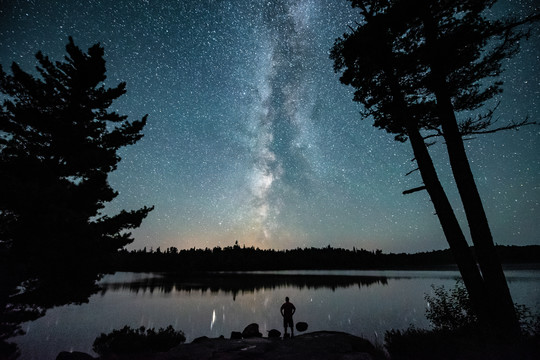 This is what a night sky photographer selfie looks like: Novitsky posing with Jiibay Ziibi (River of Souls) or Jiibaykona (Spirit Path). PHOTOS: Travis Novitsky
As Ojibwe people, we live our lives with a strong connection to nature and the seasons. Outdoor activities such as harvesting maple sap, wild rice and berries, subsistence hunting and fishing are part of our cultural identity. My relatives taught me ways to observe and connect with nature. From moose tracks to wood chips left by beavers, everywhere you look there's a story that reminds us we share the land with more "residents" than we're probably aware of.
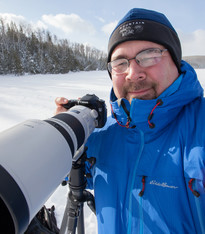
When I'm outside, I connect with nature but also with my ancestors. As a lover of the outdoors, I like many activities — hiking, biking, paddling, fishing, exploring forest roads in my Jeep. Nature photography is by far my favorite. Through photography, I connect with nature on a deeper level. It helps me slow down and truly appreciate my surroundings. When day-to-day life seems to get crazier and busier, I go out with my camera. From behind the lens, I focus on being present in the moment and my mind stops racing, and I feel more centered and at peace.
The night sky is my favorite subject. I like trying different techniques to capture the Milky Way, Aurora Borealis (northern lights), or a landscape illuminated by a full moon. With reduced vision, we have to rely more on other senses at night, which enhances our connection to nature.
I love developed public lands with amenities, and also the rugged and undeveloped experience other public lands offer. As an Ojibwe man, I do sometimes lament the loss of so much of our ancestral homeland to private ownership. I wonder what it was like for my ancestors, who were able to travel freely up and down the shores of Lake Superior without having to worry about trespassing.
Public lands are here for everyone to enjoy and find their own sense of peace in nature. Nature sustains, connects and inspires all of us. As the original owners of this land, Indigenous people have strong traditions of hospitality and being welcoming. Learn about the history of the land and join me in being a land steward.
Novitsky is a renowned photographer and park manager at Grand Portage State Park.
From the MCV: For my people, water is the lifeblood of the land — the life-giver and the life-sustainer.
|
Teacher and ultra-runner from the Navajo Nation, and founder of Native Women Running
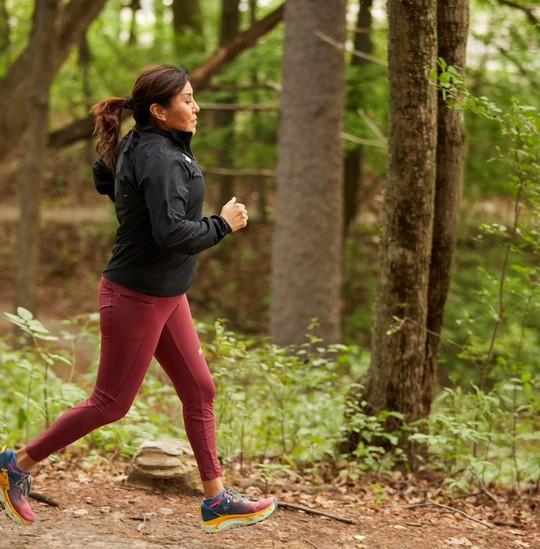 PHOTOS (above and below): Michael Haug Photography
I started my running journey in 2009 to lose weight. The journey soon turned into a quest to find out who I am. In the process, I became a marathoner first and then an ultra-marathoner. My desire is to use my running to inspire others.
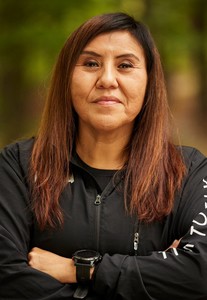
I love trail running because I love nature. Even if I go on the same trail, I always discover something new. I love that it can be more challenging than road running, as the terrain is uneven and there are more elevation changes. Afton State Park has some of my favorite trails, precisely for the hills.
It was only recently that I realized how much I’ve taken our public lands for granted. Running connects me to the land, land that was our ancestors’. When you run, there’s a closeness to what’s around you, to a creator.
Running has been a sport reserved for upper class white people, and I’ve struggled with the sense of belonging. I’ve felt intimidated being the only brown person. It’s important to know there’s space for all of us. We all have a right to be there.
I started Native Women Running (NWR) as an Instagram page in early 2018, mainly to show representation. I wanted all the amazing Indigenous female runners to be celebrated and to become part of the narrative. NWR has grown into a supportive community that brings a positive message for all runners, whether attempting their first 5K or their tenth ultra-marathon! Storytelling is an important part of our culture as Indigenous people and that’s what NWR focuses on.
Running is a physical challenge but, for Indigenous runners, it’s also the medicine. A lot of us run for healing. Join in celebrating Native Women Running.
From the MCV, kwe (women) running trails and finding power.
|
Weaving relationships with the land and his Ojibwe ancestors
Jake credits his Ojibwe grandmother for teaching him about his native roots and equipping him with spiritual tools to better connect to the world around him.
 Looking at crayfish by High Falls at Tettegouche State Park. PHOTOS: Jake Walsh
Gratitude fills me with generosity and respect that guides my relationship with nature, changing my focus from what I can take to what I can give. Humility helps me understand my place in the world, and forces me to consider creation as a whole, built of connections.

We’re just a piece of that whole, and we have a responsibility to understand the relationships that weave us into it. The land, water and creatures that make up the resources we manage at the Minnesota DNR are valuable to us for supporting a good life, but more than that, they’re valuable because they also have a right to be whole and healthy.
Many critical processes in nature occur on the scale of centuries, millennia and much longer. We need to respect and value the slow processes of nature. For generations, my Indigenous ancestors lived in balanced relationship with the land, gathering data in stories and teachings. I was taught to consider the seven generations that came before me and the seven generations that will come after me when making decisions about how I live my life.
Jake Walsh is the Research and Grants Coordinator in the Invasive Species Program in the Ecological and Water Resources Division of the Minnesota DNR.
|
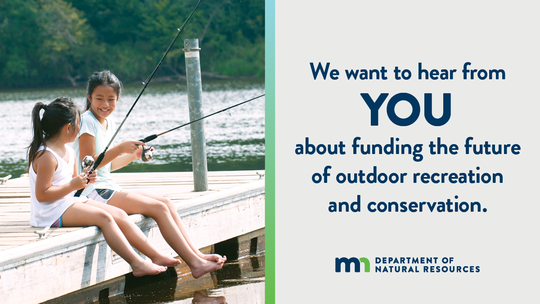

Dakota floral beadwork shows gratitude and respect to the plants and environment that provide us sustenance
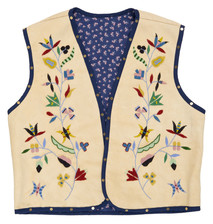
When Holly Young found her grandmother's collection of intricate floral beadwork, she also found her calling: To help preserve a lost Dakota art form, by sharing her art and teaching others.
Traditionally, each piece of beadwork has a purpose and tells a family story. The floral designs reflect intimate knowledge of woodland flowers and plants, and express gratitude and respect for the natural world relatives that provide sustenance.
See more of Holly Young's beadwork and art.
|
|